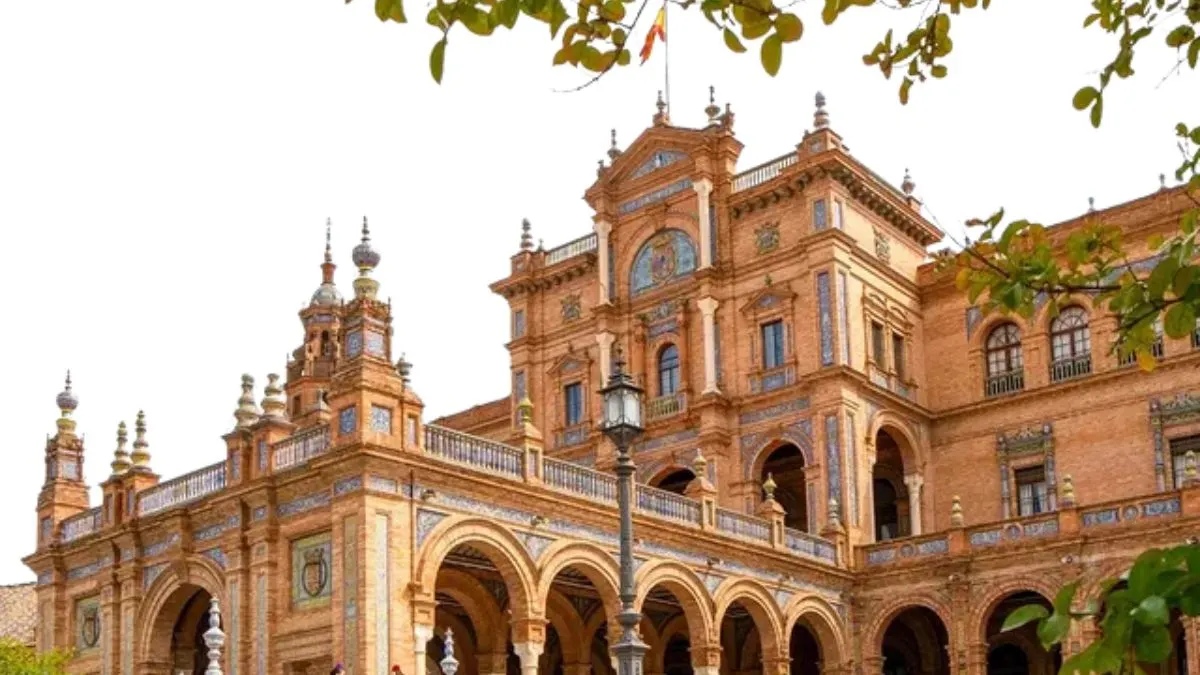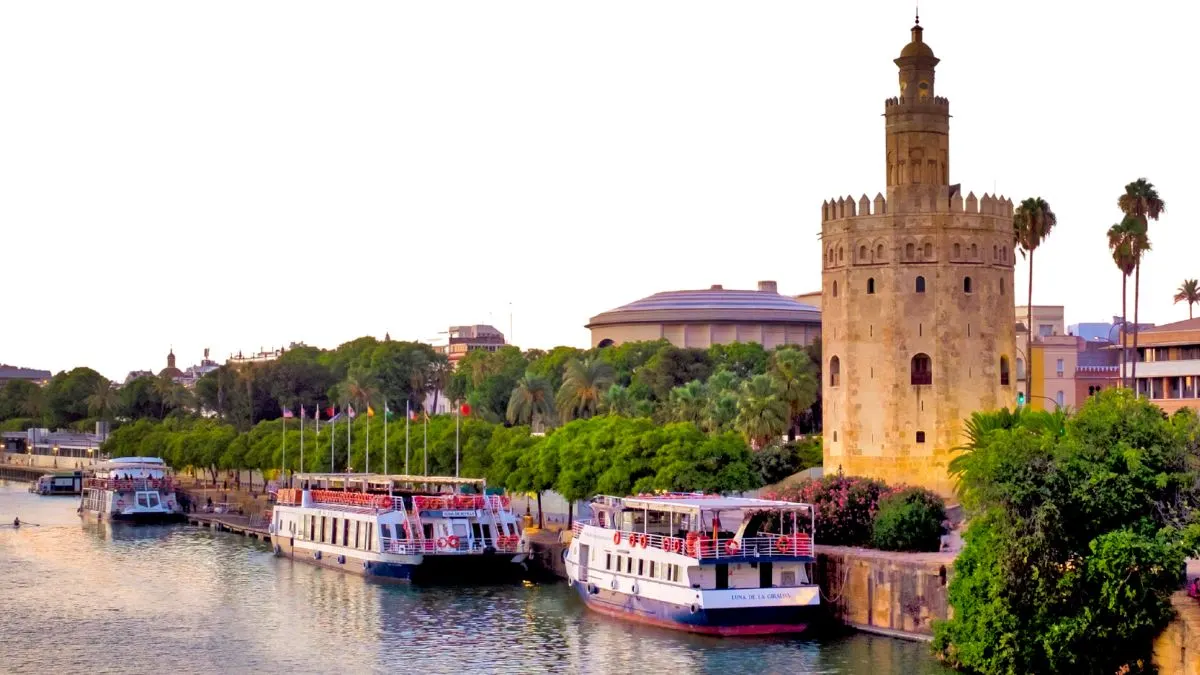Few cities capture the essence of southern Spain quite like Seville. As the capital of Andalusia, Seville is a place where history, music, architecture, and gastronomy come together in perfect harmony.
If you’re drawn by its fiery flamenco performances, orange-scented streets, or majestic Moorish palaces, travel to Seville promises an unforgettable experience.
Seville, Spain, is a city that moves at its own rhythm — slow, graceful, and full of passion. From the winding alleys of the old Jewish Quarter to the grandeur of Plaza de España, every corner of Seville feels like a scene from a storybook.
Why You Should Travel to Seville:
Seville is often called the soul of Spain, and for good reason. It embodies everything people love about Spanish culture — lively plazas, mouthwatering tapas, traditional festivals, and warm hospitality.
Here’s why traveling to Seville should be at the top of your list:
-
Rich History and Architecture: From Roman ruins to Moorish palaces and Gothic cathedrals, Seville’s architecture tells the story of centuries past.
-
Flamenco Capital: Experience the emotional intensity of authentic flamenco in its birthplace.
-
Mild Climate: With over 300 days of sunshine each year, Seville is one of Europe’s sunniest destinations.
-
Gastronomic Delights: Tapas culture thrives here — sharing small dishes over good wine is a way of life.
-
Festivals and Traditions: Semana Santa (Holy Week) and Feria de Abril (April Fair) are among Spain’s most famous celebrations.
When you travel to Seville, you’ll quickly realize that this city isn’t just a destination — it’s an emotion.
7 Attractions to Visit in Seville, Spain:
Seville Cathedral to the stunning Plaza de España, these 7 attractions to visit in Seville reveal the city’s rich culture, architecture, and unforgettable beauty.
1. The Royal Alcázar of Seville
A UNESCO World Heritage site, the Real Alcázar is a breathtaking example of Mudéjar architecture. Its intricate tilework, stunning courtyards, and lush gardens make it one of Seville’s top attractions. Fans of Game of Thrones may recognize it as the setting for the Water Gardens of Dorne.
2. Seville Cathedral and La Giralda
One of the largest Gothic cathedrals in the world, the Seville Cathedral is home to the tomb of Christopher Columbus. Climb the Giralda Tower for panoramic views of the city’s skyline — it’s one of Seville’s most iconic experiences.
3. Plaza de España
Built for the 1929 Ibero-American Exposition, Plaza de España is a masterpiece of Spanish architecture. The semicircular plaza, with its bridges and canals, is lined with ceramic tiles representing every province of Spain. It’s a favorite spot for photos, leisurely walks, and even rowing boats.
4. Metropol Parasol (Las Setas de Sevilla)
This massive wooden structure, located in La Encarnación Square, offers a modern contrast to Seville’s historic landmarks. The rooftop walkway provides spectacular city views, especially at sunset.
5. Barrio Santa Cruz
The old Jewish Quarter, Barrio Santa Cruz, is a maze of narrow cobblestone streets, hidden courtyards, and whitewashed houses. It’s one of Seville’s most romantic neighborhoods — perfect for evening strolls and tapas hopping.
6. Torre del Oro
The Torre del Oro, or “Tower of Gold,” stands beside the Guadalquivir River. Once part of Seville’s medieval city walls, it now houses a small maritime museum. The riverside promenade nearby is great for walking or cycling.
7. Triana District
Across the river lies Triana, Seville’s traditional neighborhood known for its flamenco culture and ceramics. Visit a local tablao (flamenco venue) to experience passionate live performances and authentic Andalusian spirit.
What to Eat in Seville, Spain:
Seville is a paradise for food lovers. Tapas originated in Andalusia, and sampling them is an essential part of your visit. Here are the must-try dishes when you travel to Seville:
-
Salmorejo: A thicker, creamier version of gazpacho made with tomatoes, bread, and olive oil.
-
Jamón Ibérico: Spain’s prized cured ham — rich, savory, and unforgettable.
-
Croquetas: Creamy béchamel fritters with ham, cheese, or cod.
-
Espinacas con Garbanzos: Spinach and chickpeas cooked in Moorish spices.
-
Tortilla Española: Traditional Spanish omelet with potatoes and onions.
-
Churros con Chocolate: Crispy fried dough dipped in thick hot chocolate — perfect for breakfast or dessert.
Pair your meal with a glass of Manzanilla sherry or a cold cerveza (beer) and enjoy like a local.
Read More: Travel To Paris | Romance, Art, and Timeless Beauty
Best Time to Travel to Seville:
The best time to travel to Seville is in spring (March–May) or autumn (September–November). During these months, the weather is pleasant, and the city comes alive with festivals and outdoor activities.
-
Spring: Ideal for sightseeing, orange blossoms fill the air, and the Feria de Abril lights up the city with music and dance.
-
Summer: Hot and dry — daytime temperatures can exceed 40°C (104°F). Many locals leave the city.
-
Autumn: Cooler temperatures and fewer crowds. Perfect for cultural exploration.
-
Winter: Mild and quiet, with fewer tourists and lower prices.
Getting Around Seville:
Seville is a very walkable city, with most attractions within easy reach. However, it also has excellent public transport.
-
Metro and Buses: Efficient and inexpensive. Purchase a rechargeable transport card for convenience.
-
Trams: Ideal for getting around the city center.
-
Bicycles: Seville is one of Europe’s most bike-friendly cities, with extensive cycle paths.
-
Taxis and Rideshares: Widely available and reasonably priced.
-
Walking: The best way to experience Seville’s charm is on foot, especially through the old town and riverfront.
Where to Stay in Seville:
Seville offers a wide range of accommodation options for all budgets:
-
Luxury: Hotel Alfonso XIII, EME Catedral Hotel, Hospes Las Casas del Rey de Baeza.
-
Mid-range: Hotel Amadeus, H10 Casa de la Plata, Hotel Rey Alfonso X.
-
Budget: For You Hostel, TOC Hostel Seville, or apartments in Triana.
-
Unique: Stay in a restored andalusian patio house or a boutique hotel in Barrio Santa Cruz.
Choose accommodation near the city center for easy access to major landmarks.
Hidden Gems in Seville:
While Seville’s main attractions are stunning, the city’s hidden corners offer just as much charm:
-
Casa de Pilatos: A hidden palace blending Renaissance and Mudéjar styles.
-
Hospital de los Venerables: A baroque masterpiece tucked away in Santa Cruz.
-
Parque de María Luisa: A lush urban park perfect for picnics and leisurely walks.
-
Flamenco Museum: Learn about the history and art of flamenco in an interactive way.
-
Mercado de Triana: A lively market offering local produce, tapas, and souvenirs.
Exploring these lesser-known sites gives your travel to Seville Spain experience a deeper, more personal touch.
Insider Tips for Traveling to Seville:
-
Lunch is typically served between 2:00–4:00 p.m., and dinner after 9:00 p.m.
-
Many shops close for siesta in the afternoon.
-
Bring comfortable shoes — the cobblestone streets can be uneven.
-
Book Alcázar and Cathedral tickets online in advance to skip long queues.
-
Respect local customs, especially during religious festivals.
-
Stay hydrated — summers can be extremely hot.
Seville Now:
- Seville is one of those cities that feels like a timeless masterpiece — elegant, colorful, and full of life. From its architectural grandeur to its heartfelt music,
- Seville captures the spirit of southern Spain like no other destination. Whether you’re exploring royal palaces, enjoying tapas by the river, or watching flamenco under the stars, Seville leaves an impression that lasts forever.
- If you’ve ever wanted to experience the real Spain, with its passion, rhythm, and warmth, then it’s time to travel to Seville — a city that truly defines Andalusian beauty.
Seville Adventure?
- Start your travel to Seville today — book your flights, reserve your accommodation, and create your itinerary around the city’s enchanting landmarks and delicious cuisine.
Seville is waiting to welcome you with open arms, warm sunshine, and the sound of flamenco echoing through its streets.
FAQs:
1. How many days do I need in Seville?
A 3–4 day stay is ideal to explore the main attractions and enjoy local culture at a relaxed pace.
2. Is Seville expensive to visit?
Seville is relatively affordable compared to other European cities, especially for food and accommodation.
3. What language is spoken in Seville?
Spanish is the main language, but English is widely understood in tourist areas.
4. Is Seville safe for tourists?
Yes, Seville is very safe. Exercise normal precautions as you would in any European city.
5. What currency is used in Seville?
The Euro (€) is the official currency.
6. Can I visit Seville without a car?
Absolutely. Seville’s compact layout and excellent public transport make it easy to explore without driving.
Travel to Seville?
From Moorish palaces and Gothic cathedrals to lively flamenco nights and sunlit plazas, Seville, Spain is a city that enchants every traveler.
Come discover its rhythm, taste its flavors, and feel its soul — because once you visit Seville, you’ll carry a piece of it with you forever.


